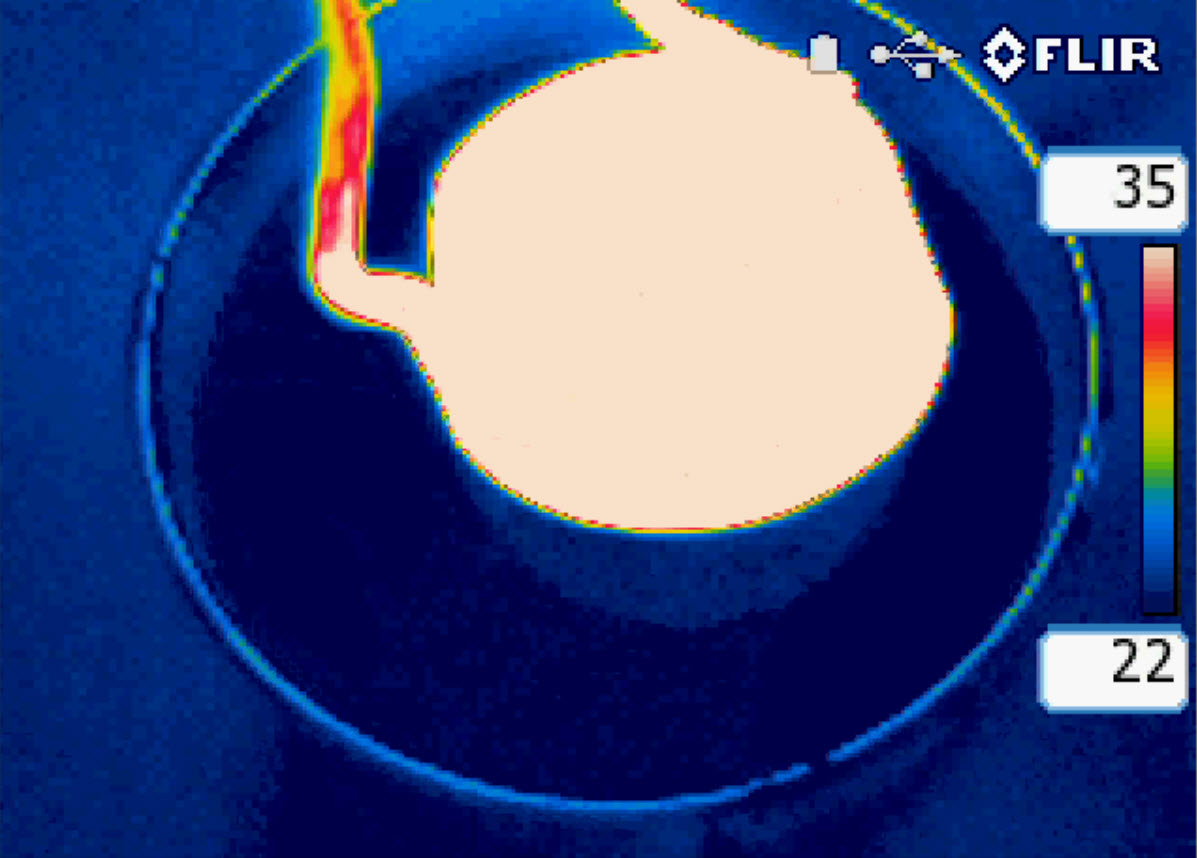Now you have learned how scientists visualize the transfer of energy at the molecular level. But scientists cannot actually see this process, because the transfer of energy involves collisions between tiny, unseen particles. Although we experience the flow of energy from warm objects to cold objects, is there a way that we can see the transfer of energy between two objects?
How do we know?
The flow of energy can be powerfully visualized using an infrared imaging camera. Objects continually emit infrared (IR) radiation as a function of temperature; objects at higher temperatures emit more IR radiation than objects at lower temperatures. An IR imaging camera detects the IR radiation emitted by an object and converts the IR radiation which is detected into a color-coded image. This allows one to visualize an object’s temperature. Therefore, with an IR imaging camera, you can visually observe how two objects at different temperatures will reach the same temperature due to the transfer of energy.
The following image, taken with an IR imaging camera, depicts a hot rubber stopper above a container of water.

The scale on the right side of the image indicates the relative temperatures of the stopper and the water based on their colors. Because the stopper is light colored, you can tell that it has a higher temperature than the dark blue water.